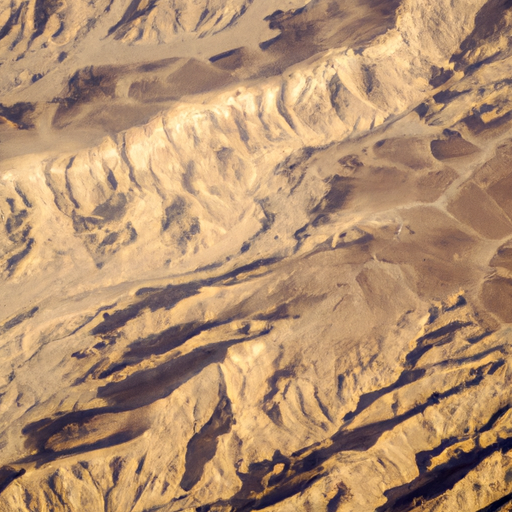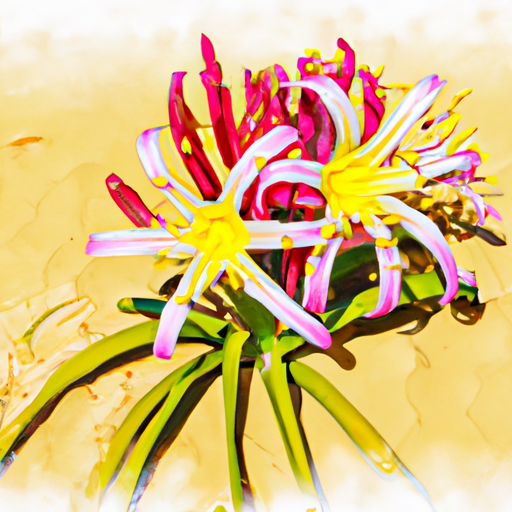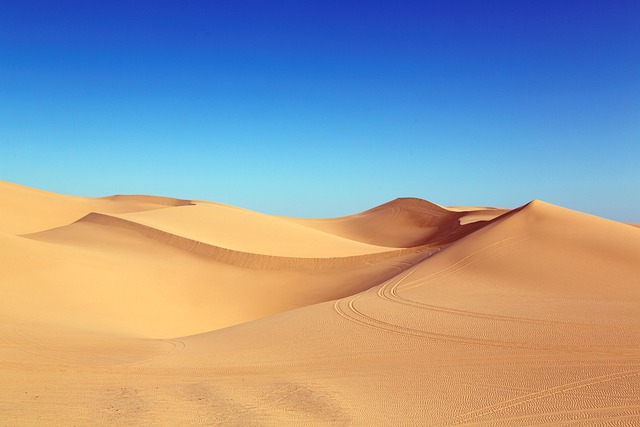Embark on a journey of unveiling the Negev Desert, a place brimming with rich history, diverse wildlife, and breathtaking landscapes. The blogpost provides a comprehensive guide to exploring the Negev, illustrating the unique aspects of this region that make it a must-visit destination for travelers.
Discover The Ancient History: How has the Negev Shaped Civilizations?
The Negev Desert, located in southern Israel, holds a rich history that has shaped civilizations for centuries. Its unique geographical features and strategic location have made it a crossroads for trade routes, leading to the flourishing of ancient civilizations. The Negev's significance can be traced back to biblical times, as it was mentioned numerous times in the Old Testament.
Occupying a vast area, the Negev Desert has witnessed the rise and fall of various ancient civilizations, including the Nabateans, Byzantines, Romans, and Egyptians. These civilizations left behind a wealth of archaeological sites, such as Petra, Avdat, and Mamshit, which stand as a testament to their once thriving existence. Exploring these sites offers a glimpse into the lives of those who inhabited the desert centuries ago.
One of the most remarkable aspects of the Negev's influence on civilizations is its ability to sustain life in a seemingly inhospitable environment. Ancient inhabitants developed sophisticated water management systems, such as cisterns and underground channels called "qanats," to collect and distribute water for agriculture and domestic use. These engineering marvels not only allowed civilizations to thrive in the desert but also contributed to their resilience and longevity.
Moreover, the Negev Desert has played a significant role in shaping cultural and religious practices. It served as a backdrop for important events in biblical stories, such as the wanderings of the Israelites during the Exodus and the journeys of the patriarchs Abraham and Moses. The desert's rugged landscapes and vast emptiness have also inspired spiritual contemplation and solitude for monks and hermits seeking enlightenment.

An aerial view of the Negev showcasing its vast sand dunes and rugged terrain.
Unearth the Hidden Fauna: What Secrets Do the Desert Animals Hold?
The Negev Desert is not just a barren landscape; it is home to a diverse range of fascinating desert animals. These creatures have adapted to the harsh conditions of the desert, making it a unique ecosystem to explore. From camels and ibexes to desert foxes and sand gazelles, the desert fauna offers a glimpse into the incredible resilience and survival strategies of these remarkable creatures.
One of the most iconic animals found in the Negev Desert is the Arabian camel, also known as the dromedary camel. These majestic creatures are well-suited to desert life, with their humps storing fat reserves for long periods without water and their broad feet helping them navigate the sandy terrain. Observing these camels in their natural habitat provides an insight into their remarkable ability to withstand the extreme temperatures and scarcity of resources.
Another fascinating desert dweller is the Nubian ibex, a species of wild goat that has adapted to the rocky cliffs and steep slopes of the Negev Desert. With their impressive agility and climbing skills, these ibexes can be seen scaling the rugged cliffs effortlessly, seeking out vegetation and water sources in the seemingly inhospitable terrain. Witnessing their acrobatics and observing their social behaviors is a truly awe-inspiring experience.
"The Desert is a Naturalist's Paradise." – Exploring the Negev's Unique Flora
The Negev Desert is a treasure trove of unique and fascinating plant life. Despite the arid conditions and limited water availability, a surprising array of flora has adapted to thrive in this seemingly inhospitable environment. The Negev's flora is a testament to the resilience and adaptability of nature, making it a paradise for naturalists and botany enthusiasts alike.
One of the most iconic plants found in the Negev Desert is the prickly pear cactus. Its distinctive paddle-shaped leaves and vibrant yellow or red fruits make it a striking sight against the desert backdrop. The cactus has evolved to store water in its thick stems, enabling it to survive the long periods without rainfall. Observing these cacti up close provides a fascinating insight into their unique adaptations for survival in the desert.
The Negev Desert is also home to a variety of desert shrubs and herbs that have developed innovative ways to conserve water. These plants often have small, waxy leaves that reduce water loss through evaporation and can withstand extreme temperatures. The desert sage, for example, releases a fragrant aroma when its leaves are crushed, serving as a defense mechanism against herbivores while also conserving moisture. Exploring the Negev's flora allows for an appreciation of the intricate strategies these plants have developed to thrive in such challenging conditions.
Furthermore, the Negev Desert boasts a stunning display of desert wildflowers during the spring months. After the winter rains, the barren landscape transforms into a vibrant carpet of colors as flowers like the desert marigold and the purple iris bloom. This ephemeral burst of life is a remarkable phenomenon to witness and highlights the resilience and adaptability of desert flora.

A detailed illustration of the desert lily, one of the unique plants that thrive in the harsh conditions of the Negev.
The Negev Night Sky: What Makes it a Stargazer's Dream?
When it comes to stargazing, the Negev Desert is an unparalleled destination. With its vast open spaces, minimal light pollution, and clear atmospheric conditions, the Negev offers an exceptional opportunity to observe the wonders of the night sky. Here are some reasons why the Negev is a stargazer's dream:
- 1. Dark Sky Reserve:
The Negev Desert is home to the Ramon Crater, which has been recognized as a Dark Sky Reserve by the International Dark-Sky Association. This designation ensures that the area is protected from light pollution, allowing for pristine and unobstructed views of the stars. The absence of artificial light allows even the faintest of celestial objects to shine brightly, making the Negev a haven for astronomers and astrophotographers. - 2. Celestial Wonders:
The Negev's unpolluted skies offer a breathtaking view of the celestial wonders above. From the Milky Way stretching across the sky like a river of stars to meteor showers painting streaks of light, the Negev provides a front-row seat to some of the most spectacular astronomical events. With a telescope or even just the naked eye, visitors can spot constellations, planets, and even distant galaxies, immersing themselves in the vastness and beauty of the universe. - 3. Cultural Astronomy:
The Negev region has a rich history steeped in astronomy and celestial observations. The area has been inhabited by various civilizations for thousands of years, and many ancient structures, such as Nabatean carvings and prehistoric rock art, incorporate astronomical symbols and alignments. Exploring these cultural sites and learning about the celestial knowledge and beliefs of past civilizations adds a fascinating dimension to stargazing in the Negev.
The Negev, while often overlooked, offers a unique and enriching experience that you will cherish for a lifetime. Whether you are a history buff, a nature enthusiast, or simply someone looking for an offbeat travel destination, the Negev is your go-to place. Discover the desert with a Negev guide and delve into an adventure that will take you through the annals of time and the mysteries of nature. For more info about the negev as well as other Israeli tours visit here.
